Boost conversions with e-commerce product recommendations. Follow this quick checklist for key placement spots, top algorithms, and proven tactics
February 6, 2025
Are You Overlooking Key Recommendation Spots? A Quick Checklist
Looking for a quick roadmap to boost sales with product recommendations? This e-commerce personalization checklist shows exactly where to place them, which recommendation algorithms work best, and how to optimize each spot—complete with practical pointers you can act on right away.
✓ Homepage
On the homepage, dynamic product recommendations instantly showcase the most relevant items from your catalog. This reassures customers they’ve found the right store, sparks their interest to explore, or directs them straight to what they need—ultimately streamlining their path to purchase.
What Algorithms to Use
- Best Performing Products: Highlight your top-performing items to instantly showcase your core offerings. This helps new visitors quickly grasp what sets your store apart.
- Personalized Recommendations: Tailor suggestions to each shopper using their browsing history, searches, and past purchases.
- Recently Viewed Items: Make it easy for customers to pick up where they left off.
Pro tip: Align recommendations with the customer journey. Feature best performers for first-time visitors, then gradually shift to personalized picks as they become more familiar with your brand.
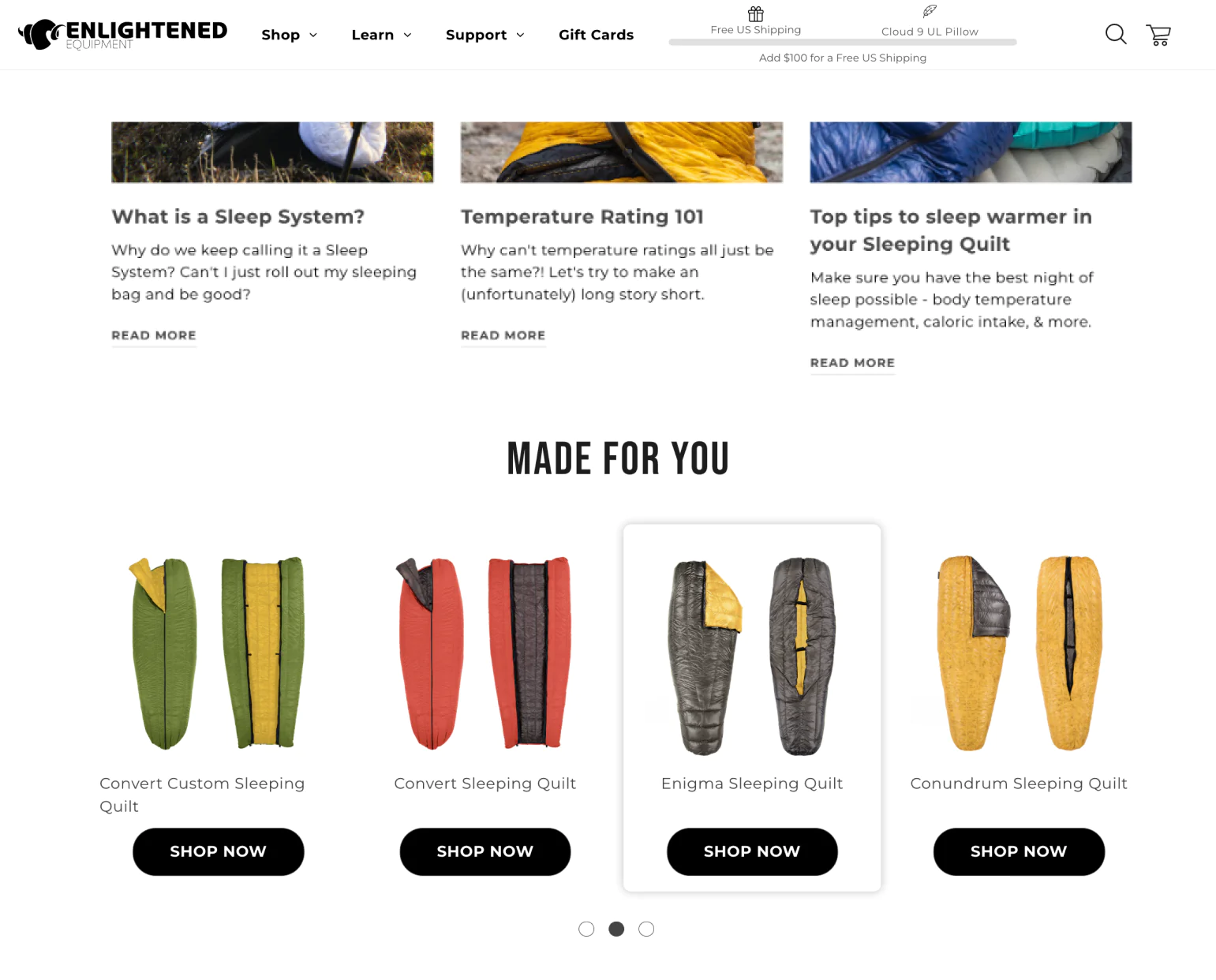
Enlightened Equipment's homepage: new customers see bestsellers, while returning visitors are offered the products they're most likely to like according to their previous behavior
✓ Categories & Listing Pages
When visitors browse a category or product listing, recommendations help them find exactly what they need—or discover something new.
What Algorithms to Use
- Category-Level Bestsellers: Showcase top-rated products within the current category, to simplify the shopping journey.
- Personalized Category Picks: Suggest category-specific items based on the customer’s browsing history and preferences.
- Related or Cross-Category Products: If a customer is browsing shampoo, suggest complementary items like conditioners or hair masks from the same line.
- Recently Viewed Items: Place these at the bottom of the listing so customers can easily return to previously viewed products if they don’t find what they need.
Pro Tip: Make recommendation cards more compelling by including ratings, review counts, available sizes or variations.
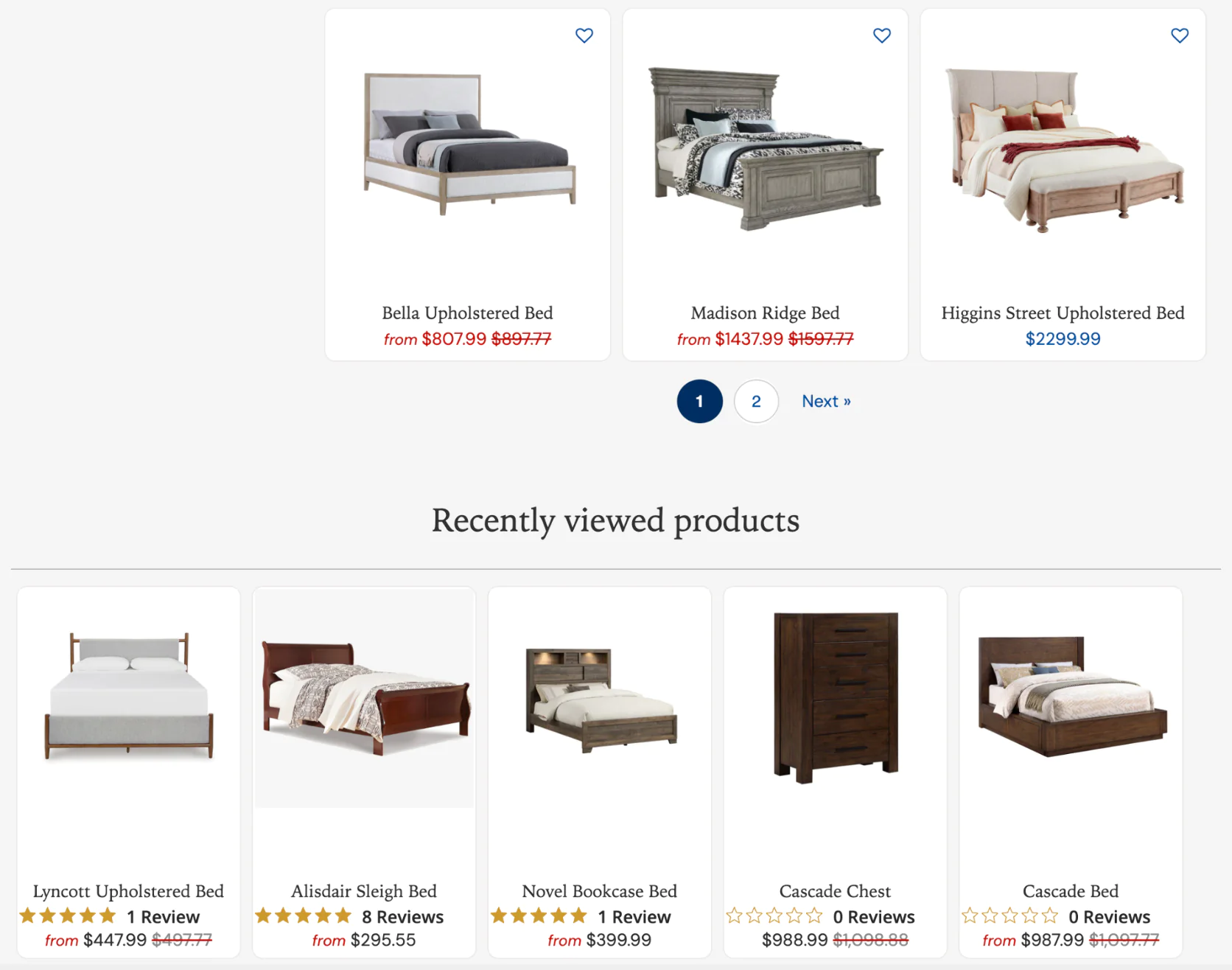
If a Furniture Fair customer doesn’t find the right item in the 'Beds' category, they can easily revisit products they previously showed interest in
✓ Product Pages
Your choice of recommendation algorithm should align with your key e-commerce metrics. Some algorithms focus on retaining customers and increasing purchase likelihood, while others drive higher average order value.
What Algorithms to Use
- Similar Items: Show close alternatives on the same page, making it easy for customers to compare and choose. For out-of-stock items, display alternatives directly below the availability notice.
- Smart Size Alternatives: If a selected size or variant is unavailable, recommend similar products available in the desired size.
- Frequently Bought Together: Suggest complementary add-ons such as accessories or matching pieces. To encourage multi-product purchases, consider using bundle templates.
- Browsing History: Place personalized recommendations based on browsing activity above the footer, excluding items already in the cart or purchased — to re-engage customers who scroll to the bottom.
Pro tip: Adapt the recommendation layout to the shopping experience. Use comparison tables on desktop to highlight key differences (features, materials, prices) side by side and switch to a scrollable grid on mobile.
Pro tip: Make “Frequently Bought Together” bundles more convenient with a single “Add All” button. At the very least, offer bundle templates that let customers quickly add multiple related products.
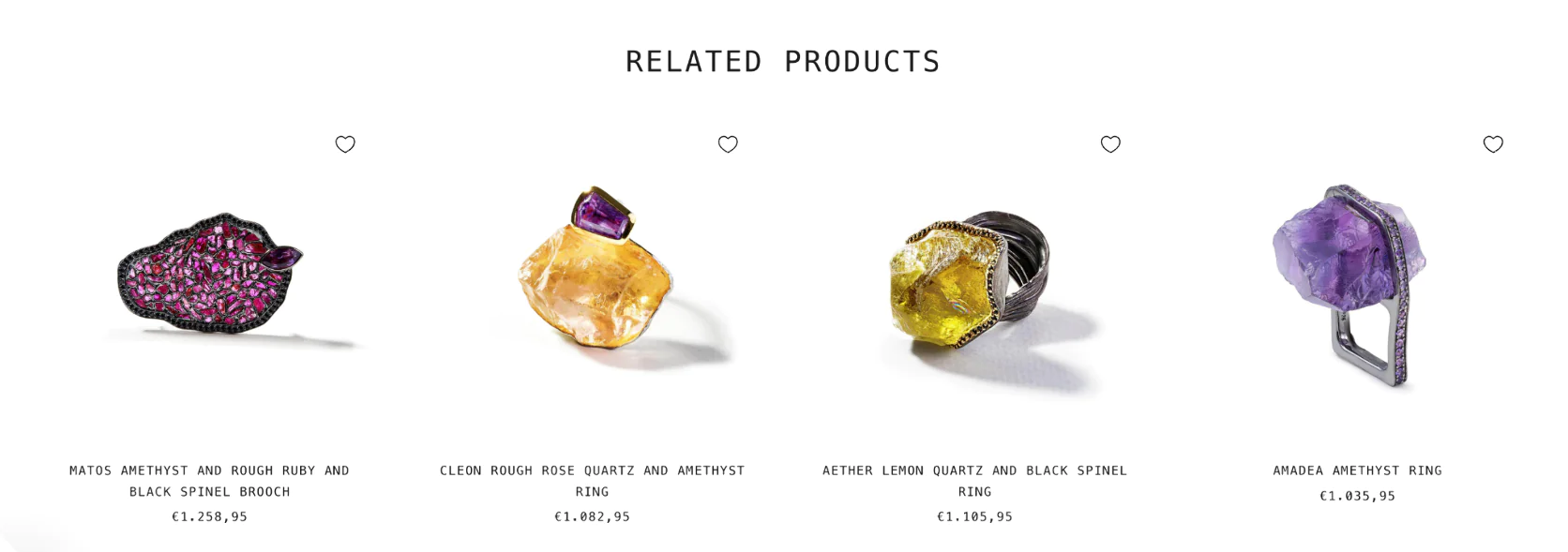
German Kabirski jewelry brand shows related products on the product pag
✓ Shopping Cart
Once products are in the cart, shoppers are close to completing their purchase. Smart suggestions at this stage can encourage additional items—but the key is subtlety.
What Algorithms to Use
- Last-Minute Add-Ons: Suggest low-cost or frequently paired items that complement what’s already in the cart.
- Recently Viewed or Wishlist Items: Gently remind shoppers of products they considered but didn’t add.
Pro tip: Keep cart recommendations focused on quick-add items at similar or lower price points than those in the cart. This makes it easy for shoppers to add relevant products without disrupting checkout.
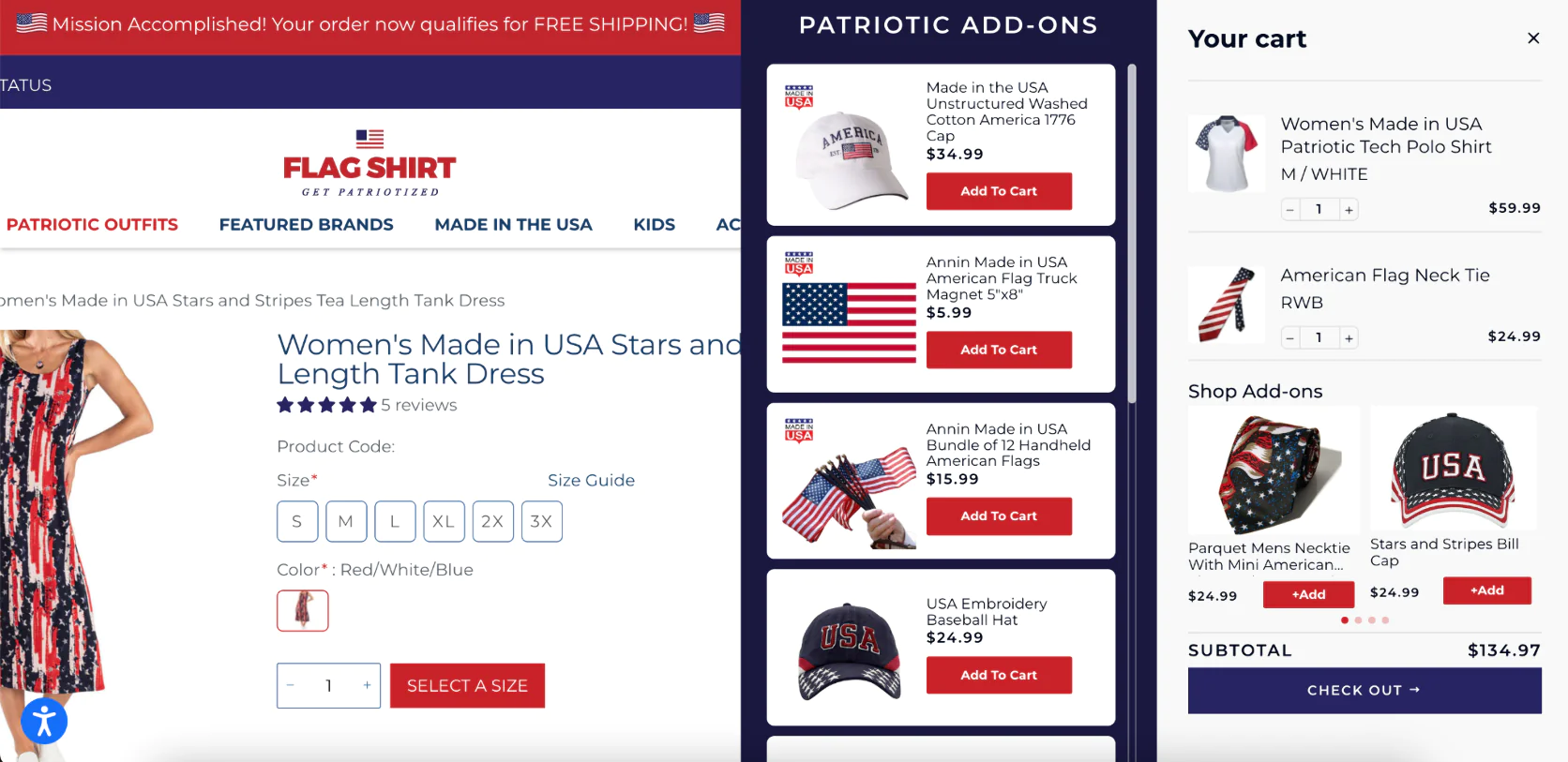
Flag Shirt online store offers Last-Minute Add-Ons before checkout
✓ 404 & Empty Search
When customers reach a 404 page or an empty search result, recommendations for re-engagement help prevent frustration and keep them on your site.
What Algorithms to Use
- Browsing History: Display recently viewed items so customers can quickly return to products they were already interested in.
- Bestsellers: Show popular products as a fallback when browsing history isn’t available.
Pro tip: Monitor the performance of browsing history vs. bestseller recommendations to understand how customers reach empty results and optimize accordingly.
Pro tip: Improve search experience with pre-search suggestions. Display popular items as soon as customers activate the search bar, even before they start typing.
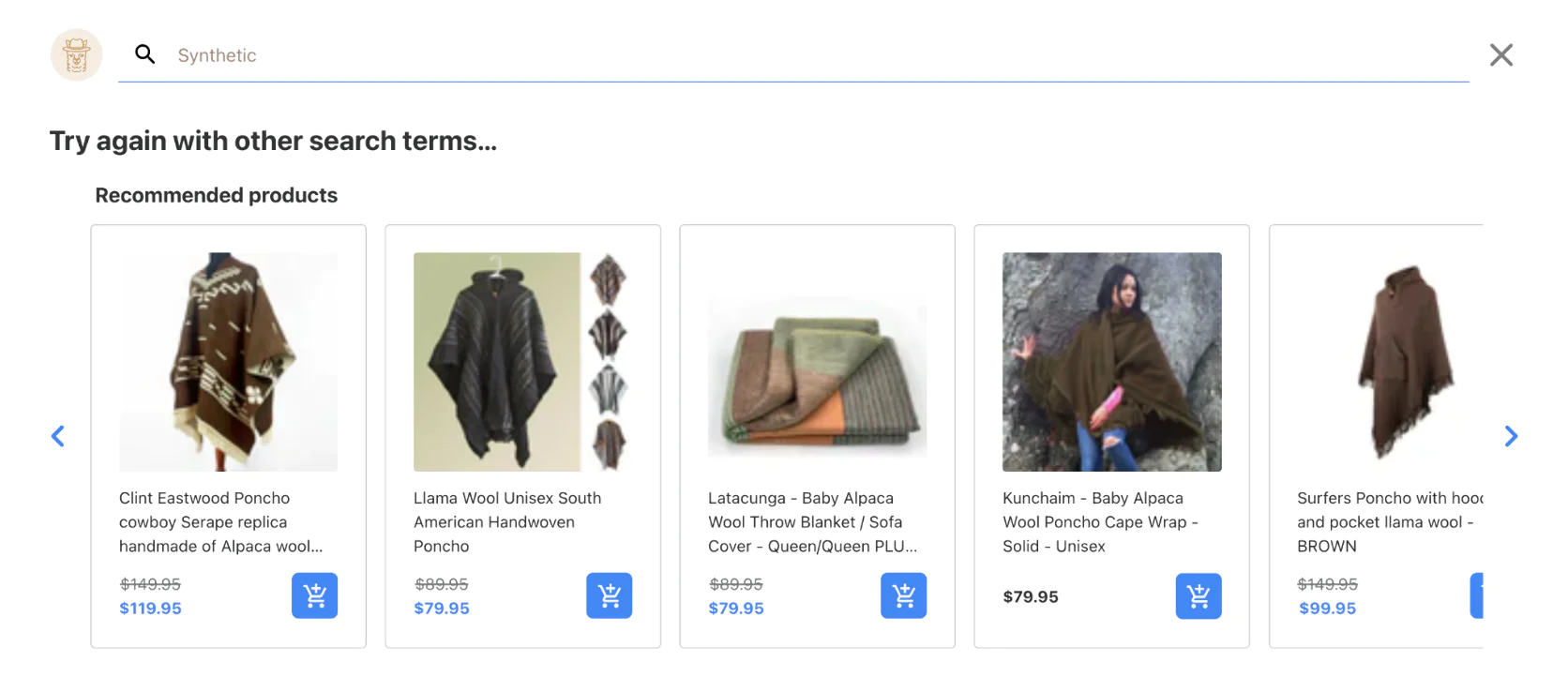
Ecualama clothing store keeps customers engaged by featuring bestsellers from its main product categories—ponchos and blankets
✓ Other Channels: Emails, Push and Web Notifications, etc.
Dynamic recommendations aren’t just for on-site experiences—off-site messages help you reconnect with shoppers in a targeted, personalized way.
What Algorithms to Use
- Recently Viewed Items + Personal Recommendations: In abandonment reminders, feature products left in the cart along with additional suggestions.
- Related Items and Last-Minute Add-Ons: In order confirmation emails, recommend complementary products that enhance or extend the recent purchase.
- Previously Purchased Items: For consumables, send timely reminders to replenish, including quick access to past orders for easy reordering.
Pro tip: Keep your main message and CTA prominent when adding recommendations to emails. Product suggestions should support—not overshadow—your primary offer.


REKS, a sports performance sunglasses brand, leverages personalized recommendations to craft unique daily campaigns tailored to individual customers
